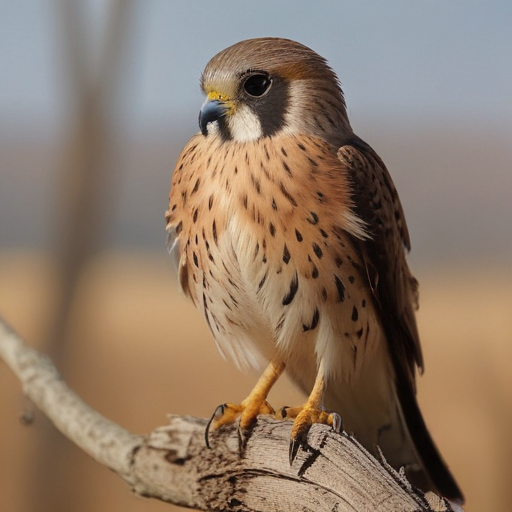Jim McCormac
Special to The Columbus Dispatch
Falcons, known for their swift and agile hunting techniques, represent a diverse family of birds of prey. In Ohio, six different falcon species have been observed, but only three—crested caracara, gyrfalcon, and prairie falcon—are considered major rarities. Among the more prevalent species, the merlin and peregrine falcon are witnessing an increase, while the American kestrel, once the most common falcon in the state, is unfortunately in decline.
The American kestrel, comparable in size to a blue jay, occupies open terrains and demonstrates impressive hunting skills, targeting a variety of prey including mice, shrews, voles, and, during warmer months, insects like cicadas and dragonflies. They are particularly known for their unique hovering ability that resembles a helicopter, a trait that sets them apart from other raptors in Ohio.
Historically, in 1930, ornithologist Lawrence Hicks noted that American kestrels outnumbered all other non-owl raptors combined in Ohio. Sadly, this is no longer the case; the kestrel population has dwindled significantly since then. Data from the “Ohio Breeding Bird Atlas II,” co-authored by McCormac in 2016, indicates that red-tailed hawks now outnumber kestrels two to one. The report warns that without addressing the broader habitat needs for both nesting and foraging, kestrel populations may continue to decline.
Key reasons for the kestrel’s unfortunate trend include intensified agricultural practices that have diminished suitable habitats, such as fallow fields and fencerows. Furthermore, the extensive use of chemicals has severely impacted invertebrate populations, disrupting the kestrels’ food supply. Additionally, the availability of natural nesting cavities, which kestrels typically rely on, has drastically decreased.
However, there is hope for these resilient birds. Kestrels have shown adaptability by utilizing alternative nesting sites such as building eaves, old church steeples, and even squirrel dreys. More importantly, nest boxes have proven to be effective in supporting their population. In collaborative efforts in the early 2010s, various organizations successfully installed 41 nest boxes on highway signs in Crawford and Wyandot counties, which led to the hatching of 30 kestrels in the 2013/14 season. Similarly, numerous boxes have been placed at The Wilds in Muskingum County, yielding successful nesting results.
Conservation efforts, including the establishment of large-scale grasslands along the Scioto River, have also contributed positively to kestrel populations. These grasslands not only provide vital wintering grounds but also attract an array of raptors, including northern harriers and short-eared owls. A recent visit to the grasslands near LaRue revealed a promising sight—half a dozen kestrels soaring above, a testament to the successes of habitat restoration initiatives.
In summary, while challenges remain for the American kestrel, there is a glimmer of hope through continued conservation efforts, habitat improvements, and innovative nesting solutions. The dedication of organizations and individuals to enhance the remaining ecosystems can lead these charismatic little falcons towards a resilient and thriving future.
Naturalist Jim McCormac returns to share insights into Ohio’s rich natural history on the first and third Sundays of the month. For further exploration of nature’s wonders, visit jim mccormac.blogspot.com.
